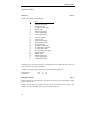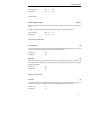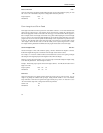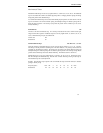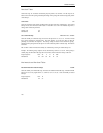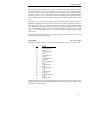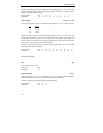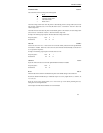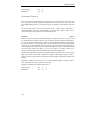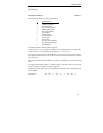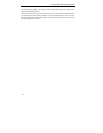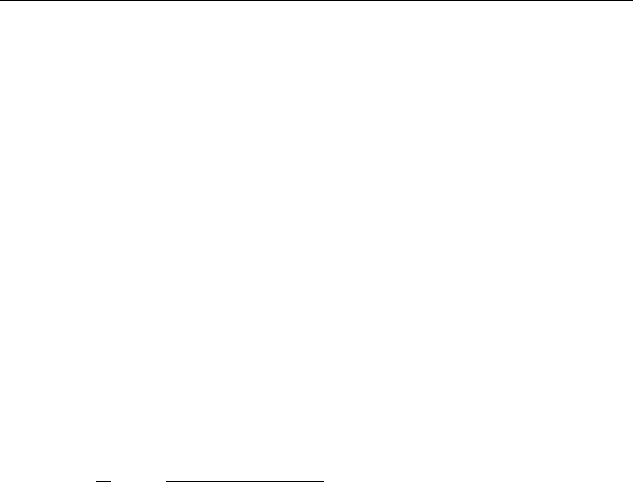
Printek Emulation
103
Each graphics sequence contains two bytes (n1 and n2) that specify how many bytes of graphics data follow.
N2 can specify values up to 255. If that is sufficient, then n1 is just set to zero. For values greater than 255,
n1 comes into play. The n1 byte specifies multiples of 256. For example, to specify 520 bytes of graphics
data, use n2 = 8 and n1 = 2. The bytes of graphics data are strung together to create a graphics line that is
eight dots high, and (n1 x 256) + n2 dots long. Be sure to provide the amount of graphics data that you
specify, because the printer will not leave graphics mode until it has accepted the specified number of data
bytes.
If “Data Bits” is set to “7” in the interface setup menu, beware of potential problems in graphics mode. Since
the MSB (most significant bit) will always be turned off, it will not be possible to fire the top wire of the print
head. Worse yet, the value of n1 or n2 may be changed. For example, if n2 specifies 200 bytes of data,
and its MSB is turned off, the printer will only expect 72 bytes of data. It will exit graphics mode, and then
try to print the remaining 128 bytes of graphics data as normal text characters. The result will surely not be
pretty. To avoid such problems, the use of an 8-bit I/O interface for printing graphics is highly
recommended.
The normal graphics modes allow every dot to be printed. High speed graphics will print twice as fast, but
will not allow consecutive dots to be printed.
m DPI Graphics ESC * m n1 n2 data
Selects eight wire graphics of density m as listed in the following table for (n1 x 256) + n2 columns of data.
m Density _______
6 240 dpi
7 240 dpi high speed
8 180 dpi
9 180 dpi high speed
10 144 dpi
11 144 dpi high speed
12 120 dpi
13 120 dpi high speed
14 102.86 dpi
15 102.86 dpi high speed
16 90 dpi
17 90 dpi high speed
18 80 dpi
19 80 dpi high speed
20 72 dpi
21 72 dpi high speed
22 65.45 dpi
23 65.45 dpi high speed
24 60 dpi
25 60 dpi high speed
NOTE: Horizontal movement of the printer's print head is measured in intervals of 1/720 of an inch. Every
supported graphics density above is an integral multiple of this resolution. For example, at 60 dpi, dots may
be printed every 12/720 of an inch.




